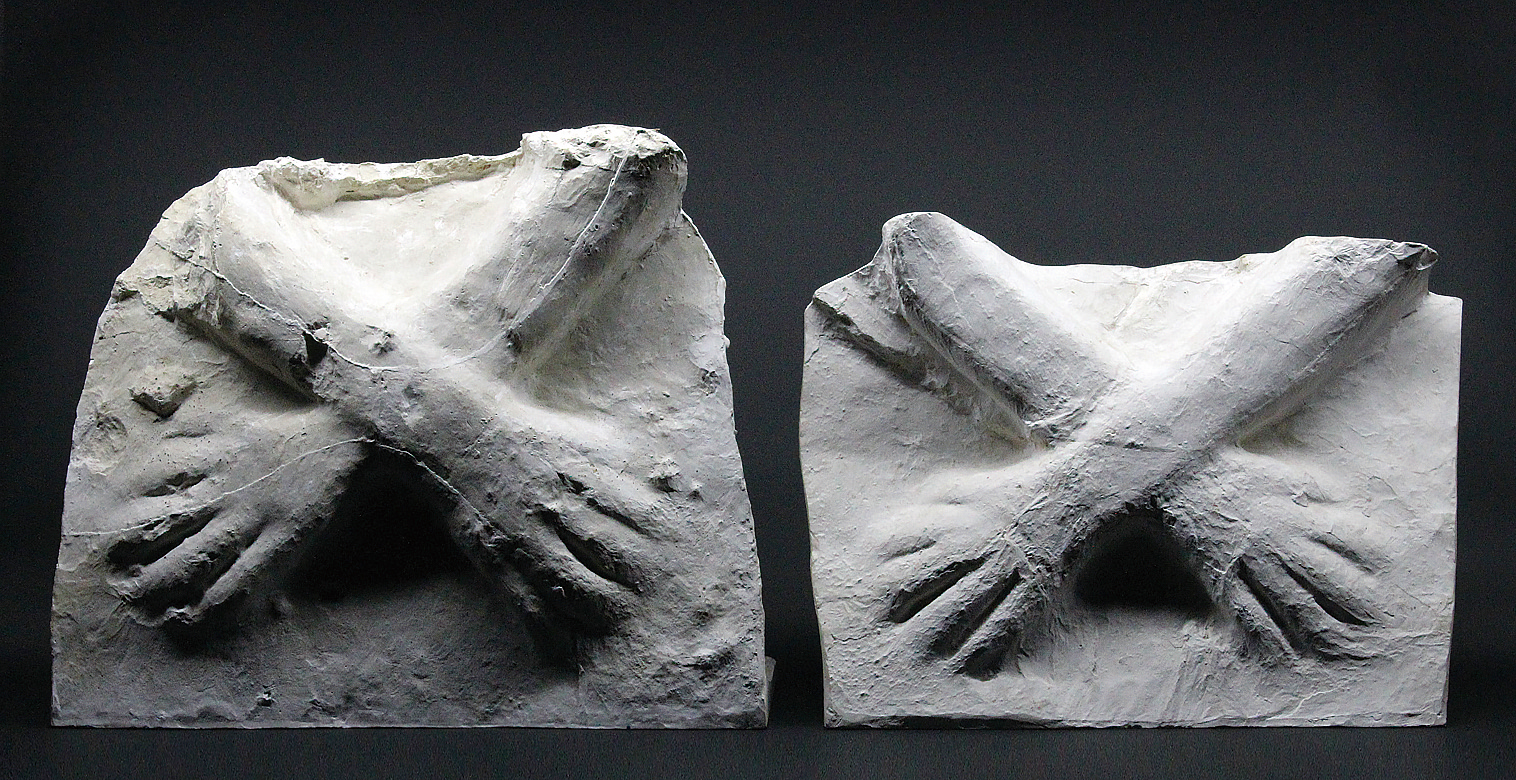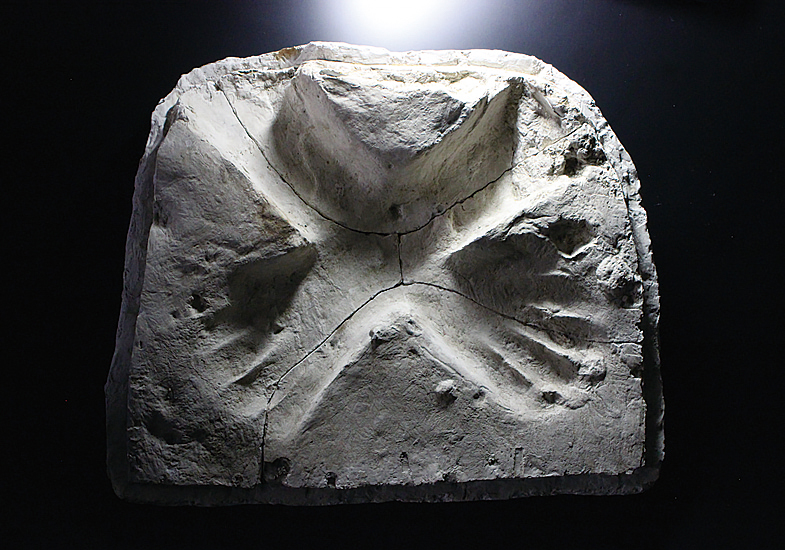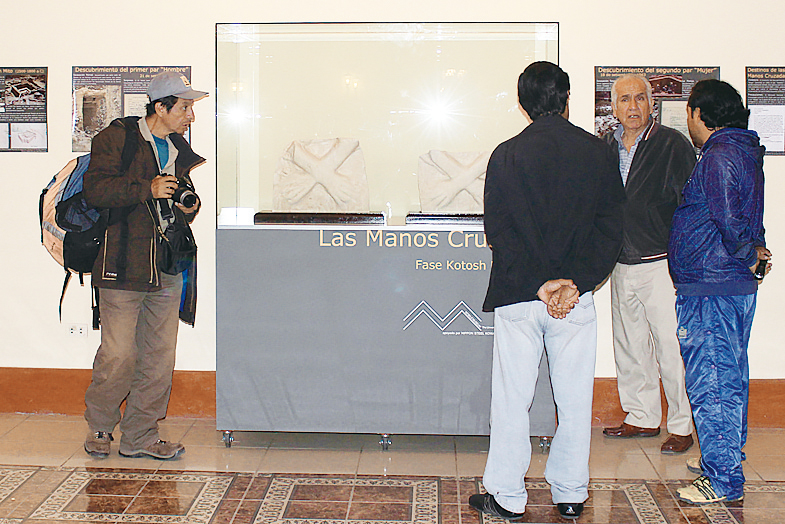G6
The Crossed Hands
At the deepest level (lowest platform) in Kotosh site, Huanuco Region of Peru, researchers from the University of Tokyo discovered ceremonial architecture (ceremonial chambers) dating from the Preceramic Period (see B55). One of the ceremonial chambers was named the Templo de las Manos Cruzadas (the Temple of the Crossed Hands) because it contained a pair of clay relieves representing crossed hands on its wall. The Crossed Hands of Kotosh are frequently referred to as representative pieces of the earliest Andean religious art. They may represent amputated arms because the same motif is found among stone carvings which depict sacrificed human bodies at Cerro Sechin, a coastal site of the same period. The first piece called “Hands of Man” was found in 1960 and was destroyed by some thoughtless visitors after the excavation. In 1963 when the second piece “Hands of Woman” was discovered the Peruvian government ordered the investigators to cut it off from the wall and transfer to the capital Lima for the purpose of preservation. The UMUT owns a pair of plaster replicas of the Crossed Hands, made originally from plaster molds. The mold of Hands of Man is especially valuable as it is the only material which shows the original form. (Eisei Tsurumi)
References
大貫良夫(1998)「交差した手の神殿」『文明の創造力:古代アンデスの神殿と社会』加藤泰建・関雄二編:43–94、角川書店。
大貫良夫(2013)「コインとレリーフ-よみがえるコトシュ」『ウロボロス』18(1): 13 。
鶴見英成(2013)「2つの神殿、3つのかけら-東大アンデス考古学のかたち-」『ウロボロス』18(3): 11–12。
Onuki Y. (2015) Una reconsideración de la fase Kotosh Mito. In: Seki, Y. (ed.) El centro ceremonial andino: nuevas perspectivas para los períodos Arcaico y Formativo, pp. 105-122. SES 89. Osaka: National Museum of Ethnology.



